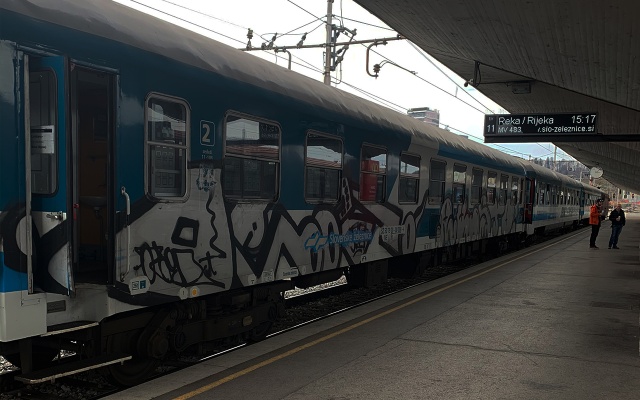She walk to table
She walks to a table
She walk to table now
She is walking to a table now
What difference it make
What difference does it make
In Nature, no completeness
No sentence really complete thought
Language, our birthright & curse
Pay no mind to immigrant syntax
Poetry, born as beast
Move best when free, undressed
— Immigrant Can’t Write Poetry, Wang Ping
What do you do when a global pandemic wipes out a multimillion-euro cultural event? Perhaps a metaphor from the Titanic is useful to consider here. Just as people saw the prow of the massive ship headed directly towards a massive iceberg, realizing the immanence of the shipwreck mere moments away, the upper classes grab the lifeboats and instruct the orchestra to play lullabies so that they can make a clean getaway before the alarm alerts the others.
Participating in art, or what was left of it during and after the COVID crisis, felt a bit like rearranging chairs on the deck of the Titanic.
In many respects, the coronavirus pandemic that gripped the world in 2020 also laid bare the social and cultural divides many of us saw coming for quite some time already. The inequality and uneven distribution of global capital quickly mobilized bailouts for the rich, while ensuring the same old austerity for the poor.
In a matter of weeks, the entire world entered a strange type of idleness: enforced social distancing and the widespread closure of bars, nightclubs, restaurants, parks and yes, galleries and museums, too. The lucky artists – i.e. those from countries with strong social welfare systems like Germany and Canada – were provided emergency relief payments after the widespread closure of much of the economy. In Berlin, within weeks of the coronavirus shuttering the economy, artists were given cash handouts of €5,000. The unlucky artists – i.e., those residing in non-socially aligned countries – were left to face the grim prospects of sudden financial hardship, loss of work and widespread cancellation of contracts, late payments and the near full-scale collapse of the gig economy.
Idleness, however, is always subject to the inevitableness of entropy.
It just so happened that at this very moment I found myself at the precipice of Mittleuropa, in Ljubljana, the foothills of the Balkans at their most northwestern point. Over the last few years, I had spent considerable time travelling on the road, from one biennale to another, hoboing from one vernissage to the next. As my new reality began to sink in, the thought of idling in Ljubljana, while romantic, was not something I wanted to consider at first. But in a matter of days, with my prospects – along with everyone else’s – began to seriously dwindle. With the world seemingly closing in around me, I took what little cash reserves I had left and embarked to Croatia, where a friend had promised me shelter in her family’s empty summer house on the island of Krk. On one of the last trains out of Slovenia, I arrived in Rijeka. There, the editor of Obieg – Krzystof Gutfranski – greeted me with open arms and wine. From the moment I arrived in Rijeka, it became clear that the situation in the port city was likely markedly better than on the island of Krk, where my friend’s family house was located. At the time, Krzysztof was a resident at the Museum of Modern and Contemporary Art (MMSU) in Rijeka, as part of a program there called Risk Change, which was under the coordination and careful eye of Marina Tkalčić, who ended up accepting me as an idle sub-resident of Krzysztof, offering me shelter for the next three months. If it were not for the generous hospitality of the MMSU, I don’t know what I would have done.
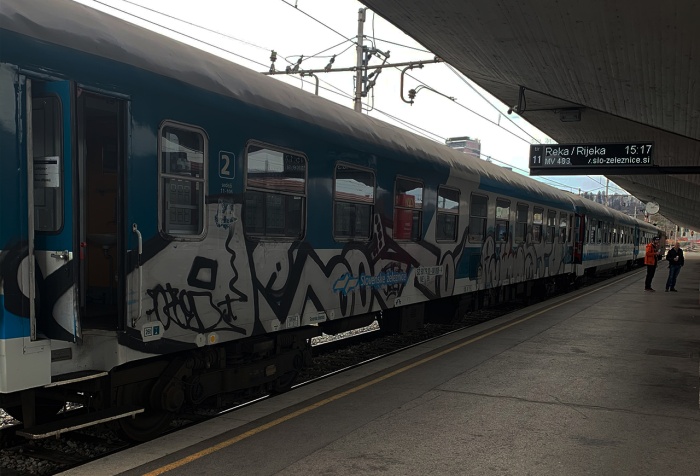
Ostatni pociąg z Lublany do Rijeki. Dzięki uprzejmości autora.
In Croatian, Rijeka means “river” and forms an old Roman settlement located on the northern tip of the Kvarner Gulf in the northern Adriatic.
In 2014, it was selected to be one of two host cities for the 2020 European Capital of Culture (ECoC) event. As a port city, the heyday of Rijeka was under ex-Yugoslav leader Josip Tito, which one proudly linked east and west serving over the course of its history as a kind of crossroads of empires, deeply intertwined with the Habsburg dynasty, Austro-Hungary and ex-Yugoslavia. However, as the world pulled up its drawbridges due to the heightening of the global coronavirus pandemic, Rijeka found itself at a crossroads again.
Within weeks of opening, ECoC was forced to shutter, and with it the majority of the 250 programs featuring over 600 individual events were all but gone. Coming in at a total cost of €71 million, ECoC has put considerable financial strain on the host city. The infrastructure budget (€44 million) included renovations to the city’s venerable Museum of Modern and Contemporary Art (MMSU), which at the time of my visit was showing an exhibition called With the Collection by David Maljković. The exhibition examined the MMSU’s collection and archives, laying bare its fault lines and in the process the various narratives that have come to dominate contemporary art in Croatia – from folk revival proto socialist realist works, to modernist abstract sculptures, the exhibition felt like a kind of institutional undressing, but set against the disaster of ECoC after the onset of the coronavirus, it felt idle, quiet, empty.
Nevertheless, the feeling I had in Rijeka during my three-months of strict lockdown became like a fog. In retrospect, however, there were rays of sunshine that started to emerge.
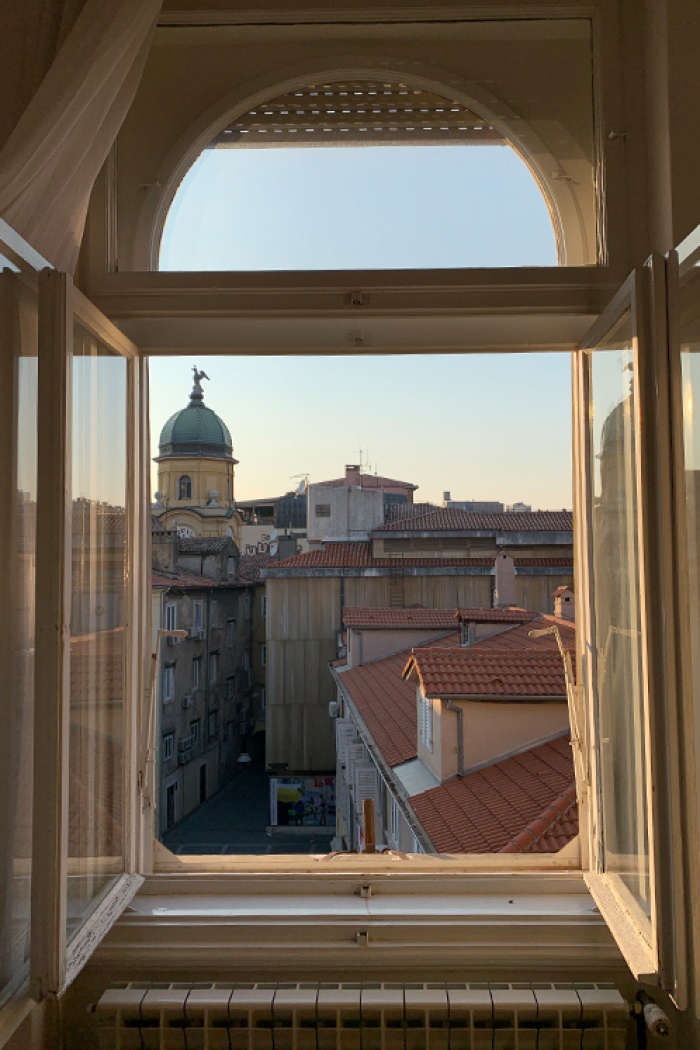
Widok z mieszkania Kamov Residency. Dzięki uprzejmości autora.
According to Daniela Urem, president of the Croatian Cultural Alliance and lecturer at the Arts and Cultural Affairs Office within the University of Rijeka, though ECoC largely failed to deliver on expected cultural outcomes, there were new ways of engendering cultural dialogues that started to emerge in its wake. As an arts educator and programmer, Urem decided to work with local artists on an alternative to the behemoth cultural event, staging an event entitled “Rijeka Underground” within the first few weeks of Croatia reopening in late May. “Rijeka Underground platform happened as the spontaneous reaction from the majority of artists and residents of Rijeka who weren’t previously invited by the Rijeka2020 agency to represent our city,” Urem said. “From the cultural policy perspective, I recognized the pioneering moment where Rijeka, being in the particular position of holding the title at the time of corona, could innovate the ECoC project at the European level by applying the highest professional practices and therefore building our proper future.”
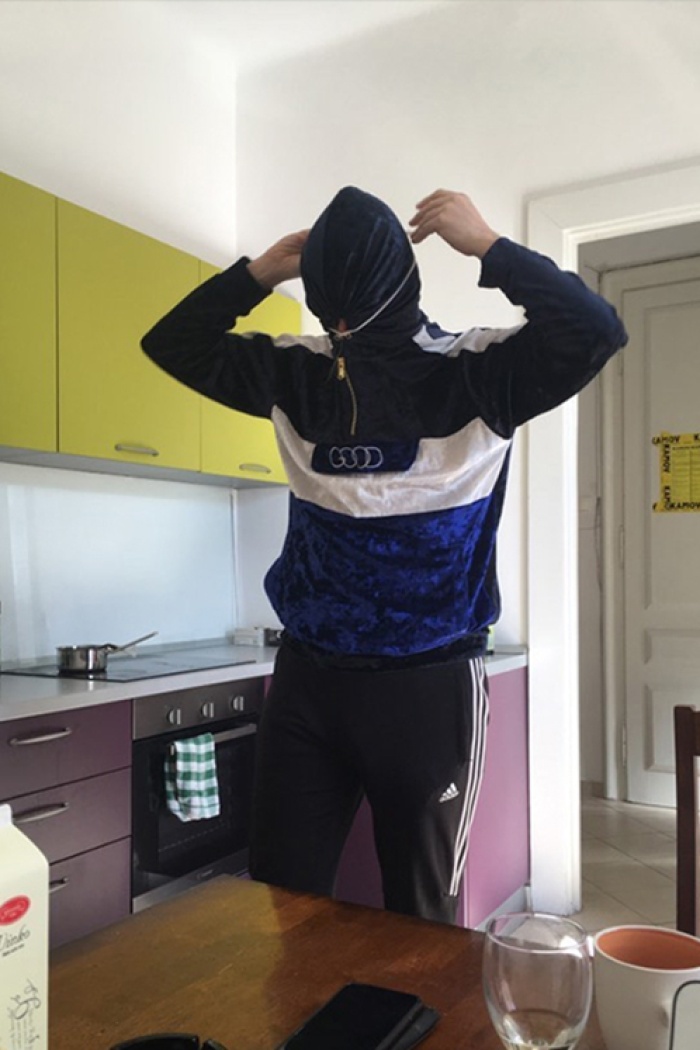
W beczynnym pogotowiu, Rijeka. Zdjęcie: Krzysztof Gutfrański.
One of the events organized by Urem during my time in Rijeka was an exhibition in her sprawling flat called Scorpio Rising, an exhibition literally borne from a collective effort to represent the work by underrepresented artists from Rijeka. The exhibition featured works by Lara Badurina, Vid Barić, Boris Burić, Petar Đakulović, Antonio Kiselić Ledinsky, Igor Eškinja, Klas Grdić, Predrag Kraljević – Kralj, Dalibor Martinis, Mitar Matić, Zdravko Milić, Toni Meštrović, Goran Nemarnik – GUS, Igor Rukavina, Melita Sorola Staničić, Damir Stojnić, Jasna Šikanja, Goran Štimac, Roman Uranjek, and Predrag Todorović. Part of what made the Rijeka Underground platform so interesting was that it was borne from a need to rebuild and discuss culture in spheres where artists – despite the fog of idleness we were all forced to endure during covid - could come together once more and imagine communities anew.
While those internally connected to ECoC hoped some semblance of normality would allow the event to continue, a new normal had clearly emerged.
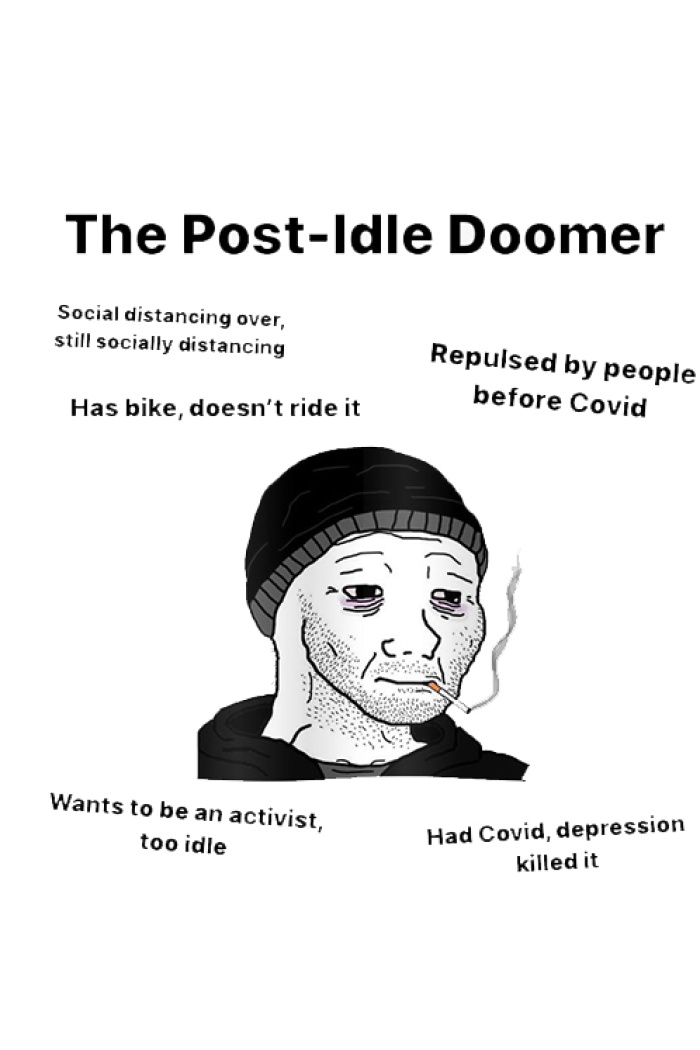
The Post-Idle Doomer. Dzięki uprzejmości autora.
“In a way, we are all in this together,” said Ivana Meštrov, curator at MMSU. “Our fragilities aligned after the initial outbreak,” she said, “but now we are finding ways of responsibly developing a response by taking into account initial agreements with the artists but also keenly aware of the challenges and new conditions that lie ahead.”
As the days, weeks and months passed by Rijeka, I waited and waited, then waited some more. Until finally, in the last weeks of May 2020, an easing of restrictions in Croatia meant it was finally possible to leave. Bars and nightclubs reopened, restaurants began seating diners, and museums and galleries reopened too. It seemed like the birds had started to sing again. I knew then it was time to hobo on. Gathering what little worldly possessions I had, leaving only a suitcase at Marina’s and promising to return again soon, I mounted my bike and just started cycling. I didn’t really have any idea where, I just knew it was time to remain idle no more.
Like many of those who have come and gone before, the life of a nomad is always one of arrival and departure, an incessant desire to move fueled by an endless stream of curiosity and wanderlust. With the sun upon my face and the wind at my back, the idleness I felt in Rijeka became a moment of reflection, a time stamp into a new world, a moment in which to gather my thoughts, unplug and go off the grid. The closing of one chapter and the beginning of another, the evolution of hobo diaries had truly only just begun.
Rijeka, March – May 2020
BIO
Dorian Batycka is a journalist, a curator, a continental drifter and a flaneur. He is a connoisseur of dank memes and the many mysteries of the Old World.
*Cover photo: The Last Train from Ljubljana to Rijeka (courtesy Dorian Batycka).



